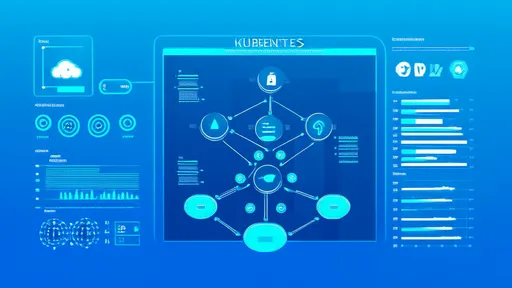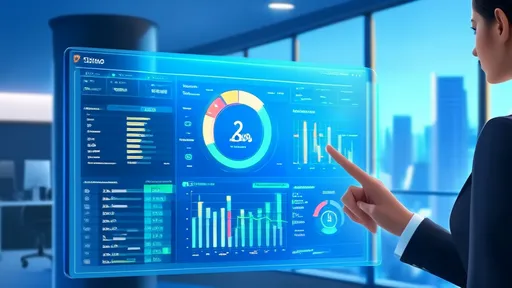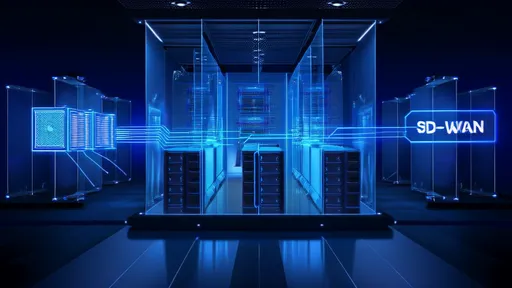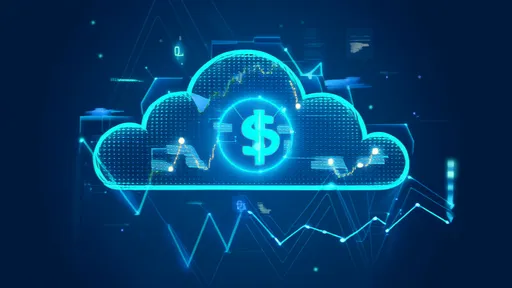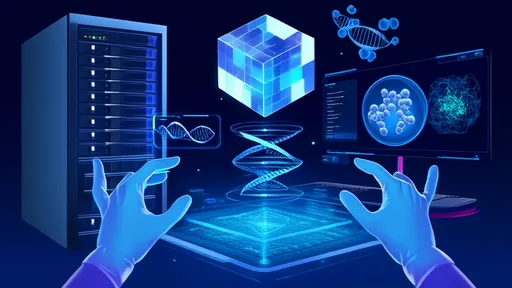The economic implications of serverless computing have become a central topic in cloud architecture discussions, shifting the conversation from pure technical implementation to strategic financial optimization. As organizations increasingly adopt Function-as-a-Service (FaaS) platforms, understanding the nuanced cost structures and optimization opportunities has become critical for maintaining competitive advantage while controlling cloud expenditures.
Unlike traditional cloud infrastructure models where costs are primarily driven by resource allocation and reservation, serverless computing introduces a pay-per-execution model that fundamentally changes how organizations budget for and analyze their cloud spending. This paradigm shift means companies only pay for actual computation time rather than provisioned capacity, eliminating idle resource costs but introducing new variables that require careful monitoring and management.
The core serverless cost model comprises several interconnected components that collectively determine the total expenditure. Execution time remains the most significant factor, calculated from the moment code begins running until it returns or terminates, rounded up to the nearest millisecond by most providers. Memory allocation represents another critical variable, as cloud providers charge higher rates for functions configured with greater memory, even if the application doesn't fully utilize the allocated resources.
Number of invocations creates a base cost layer, with providers typically charging a per-million-invocation fee that varies by region and platform. While this cost appears minimal initially, high-volume applications can generate substantial expenses that accumulate quickly without proper oversight. Data transfer costs often surprise organizations, as moving data between services or out to the internet incurs additional charges that can significantly impact the total bill.
Cold starts present both a performance and economic consideration in serverless architectures. When functions haven't been invoked recently, providers must initialize new execution environments, resulting in longer response times and potentially higher costs if initialization requires substantial computational resources. While warm invocations benefit from pre-existing environments, the balance between keeping functions warm and accepting cold start penalties requires careful economic analysis.
Optimization practices begin with right-sizing function memory allocation, as this single parameter often has the most substantial impact on both performance and cost. Through systematic testing and monitoring, organizations can identify the optimal memory configuration that provides adequate performance without overprovisioning. This process requires continuous refinement as application requirements evolve and traffic patterns change.
Function duration optimization represents another crucial area for cost reduction. By analyzing code execution paths, eliminating unnecessary computations, and implementing efficient algorithms, developers can significantly reduce execution time. Even millisecond-level improvements compound substantially at scale, making code optimization both a technical and financial imperative.
Architectural decisions profoundly influence serverless economics. Implementing appropriate caching strategies reduces both invocation counts and execution times by serving frequently accessed data without computational overhead. Designing functions to handle multiple related operations through intelligent event processing can decrease total invocations while maintaining system functionality.
Monitoring and analytics form the foundation of effective serverless cost management. Implementing comprehensive logging and metric collection enables organizations to identify cost anomalies, understand spending patterns, and make data-driven optimization decisions. Third-party monitoring tools specifically designed for serverless environments provide enhanced visibility beyond native cloud provider tools.
Resource tagging and cost allocation strategies enable organizations to attribute serverless expenses to specific projects, teams, or business units accurately. This granular visibility facilitates accountability and helps identify areas where optimization efforts will yield the highest return on investment. Without proper tagging, serverless costs can become opaque and difficult to manage effectively.
The trade-offs between performance and cost require continuous evaluation in serverless environments. Organizations must balance the economic benefits of aggressive optimization against potential impacts on user experience and system reliability. Establishing clear performance budgets and cost thresholds helps maintain this balance while ensuring financial objectives align with technical requirements.
Reserved capacity options, recently introduced by major cloud providers, offer alternative pricing models for predictable workloads. While contradicting the pure pay-per-use philosophy, these options can provide substantial savings for functions with consistent invocation patterns. Evaluating whether to use on-demand or reserved pricing requires careful analysis of historical usage data and future projections.
Multi-cloud and hybrid approaches introduce additional complexity to serverless economics. Different providers offer varying pricing structures, performance characteristics, and feature sets that must be evaluated holistically rather than based on individual component costs. The operational overhead of managing multiple serverless environments must be factored into total cost calculations.
Security considerations indirectly impact serverless economics through their influence on architecture decisions and implementation requirements. Proper security measures may increase function complexity and execution time but prevent potentially catastrophic financial losses from security incidents. This risk-based economic analysis should inform security implementation decisions.
The future of serverless economics points toward increasingly sophisticated optimization tools and practices. Machine learning-driven cost optimization, automated right-sizing recommendations, and predictive scaling capabilities represent the next frontier in managing serverless expenditures. As the technology matures, organizations that master serverless economics will gain significant competitive advantages in their digital transformation journeys.
Ultimately, serverless computing demands a fundamentally different approach to cloud financial management. Organizations must develop specialized skills in serverless cost optimization, implement appropriate monitoring and governance practices, and foster collaboration between development and finance teams. Those who successfully navigate these challenges will unlock the full potential of serverless computing while maintaining control over their cloud investments.
In today's rapidly evolving cybersecurity landscape, organizations face increasingly sophisticated threats that traditional perimeter-based defenses struggle to contain. The concept of microsegmentation has emerged as a critical component of zero trust architecture, fundamentally transforming how enterprises protect their digital assets. Unlike conventional security approaches that focus on building strong outer walls, microsegmentation operates on the principle that no entity—whether inside or outside the network—should be automatically trusted.
In the ever-evolving landscape of container orchestration, Kubernetes has firmly established itself as the de facto standard for managing containerized applications at scale. One of its most powerful features is the ability to automatically scale applications in response to fluctuating demand, ensuring optimal performance while controlling costs. However, implementing an effective autoscaling strategy requires more than just enabling the feature; it demands a thoughtful approach grounded in proven best practices.
In today's digital landscape, cloud computing has become the backbone of modern business operations, offering unparalleled scalability and flexibility. However, this convenience comes at a cost—literally. As organizations increasingly migrate to the cloud, managing and controlling cloud expenditures has emerged as a critical challenge. Many companies find themselves grappling with unexpected bills, wasted resources, and a lack of visibility into where their cloud dollars are going. This is where FinOps, a cultural practice and operational framework, steps in to bring financial accountability to the world of cloud spending.
The cybersecurity landscape continues to evolve at a breakneck pace, with containerization sitting squarely at the heart of modern application development. As organizations increasingly deploy applications using technologies like Docker and Kubernetes, the security of the underlying container images has become a paramount concern. This has spurred the development and maturation of a robust market for container image vulnerability scanning tools, each promising to fortify the software supply chain. A comprehensive evaluation of these tools reveals a complex ecosystem where capabilities, integration depth, and operational efficiency vary significantly.
As enterprises continue their digital transformation journeys, the debate between SD-WAN and SASE for hybrid cloud connectivity has become increasingly prominent. These two technologies represent different generations of networking solutions, each with distinct approaches to addressing the complex challenges of modern distributed architectures. While SD-WAN emerged as a revolutionary improvement over traditional MPLS networks, SASE represents a more comprehensive framework that integrates networking and security into a unified cloud-native service.
The evolution of cloud-native databases has entered a new phase with the rise of serverless architectures. What began as a shift from on-premise data centers to cloud-hosted instances has now matured into a more dynamic, cost-efficient, and scalable paradigm. The serverless model represents a fundamental rethinking of how databases are provisioned, managed, and utilized, moving away from static resource allocation toward an on-demand, pay-per-use approach. This transformation is not merely a technical upgrade but a strategic enabler for businesses aiming to thrive in an unpredictable, data-intensive landscape.
In the rapidly evolving landscape of cloud-native computing, the demand for robust observability has never been more critical. As organizations migrate to dynamic, distributed architectures, traditional monitoring tools often fall short in providing the depth and real-time insights required to maintain system reliability and performance. Enter eBPF—extended Berkeley Packet Filter—a revolutionary technology that is redefining how we achieve observability in cloud-native environments. Originally designed for network packet filtering, eBPF has evolved into a powerful kernel-level tool that enables developers and operators to gain unprecedented visibility into their systems without modifying application code or restarting processes.
The landscape of enterprise IT has undergone a seismic shift with the widespread adoption of multi-cloud and hybrid cloud strategies. While this approach offers unparalleled flexibility, cost optimization, and avoids vendor lock-in, it introduces a formidable layer of complexity. At the heart of this complexity lies the significant challenge of managing compatibility across disparate cloud environments. Cross-cloud management platforms have emerged as the central nervous system for this new reality, but their effectiveness is directly tied to their ability to navigate a labyrinth of compatibility issues.
The economic implications of serverless computing have become a central topic in cloud architecture discussions, shifting the conversation from pure technical implementation to strategic financial optimization. As organizations increasingly adopt Function-as-a-Service (FaaS) platforms, understanding the nuanced cost structures and optimization opportunities has become critical for maintaining competitive advantage while controlling cloud expenditures.
The landscape of software development has undergone a seismic shift with the proliferation of cloud-native architectures. As organizations race to deliver applications faster and more reliably through CI/CD pipelines, a critical challenge has emerged: security. The traditional approach of bolting on security measures at the end of the development cycle is no longer tenable. It creates bottlenecks, delays releases, and often results in vulnerabilities being discovered too late, when remediation is most costly and disruptive. In response, a transformative strategy known as "shifting left" has gained significant traction, fundamentally rethinking how and when security is integrated into the software development lifecycle.
The landscape of software testing is undergoing a profound transformation, driven by the relentless integration of artificial intelligence. One of the most impactful and rapidly evolving applications of AI in this domain is the automation of test case generation. This is not merely an incremental improvement to existing processes; it represents a fundamental shift in how development teams approach quality assurance, promising to accelerate release cycles while simultaneously enhancing the robustness and coverage of testing regimens.
In the ever-evolving landscape of artificial intelligence, voice generation technology has emerged as one of the most captivating and, at times, unsettling advancements. The ability to clone and generate highly realistic human voices is no longer confined to the realms of science fiction; it is a present-day reality with profound implications. This technology, often referred to as voice cloning or neural voice synthesis, leverages deep learning models to analyze, replicate, and generate speech that is indistinguishable from that of a real person. The process begins with the collection of a sample of the target voice, which can be as short as a few seconds or as long as several hours, depending on the desired fidelity and the complexity of the model being used.
The semiconductor industry stands at an inflection point where traditional chip design methodologies are increasingly strained by the complexity of modern architectures. As Moore's Law continues its relentless march, the once-manual processes of floorplanning and routing have become prohibitively time-consuming and error-prone. In this challenging landscape, reinforcement learning has emerged not merely as an experimental approach but as a transformative force in automating and optimizing chip layout.
In laboratories and research institutions across the globe, a quiet revolution is underway as artificial intelligence becomes an indispensable partner in scientific discovery. What was once the domain of human intuition, years of trial and error, and painstaking data analysis is now being accelerated at an unprecedented pace by machine learning algorithms and computational power. This transformation is not about replacing scientists but empowering them to ask bigger questions and uncover deeper truths about our universe.
In the ever-evolving landscape of artificial intelligence, a quiet revolution is taking place that promises to fundamentally reshape how machines understand the world. For decades, the field has been dominated by correlation-based approaches—powerful pattern recognition systems that excel at finding statistical relationships in data but fall painfully short when it comes to true understanding. The emerging discipline of causal machine learning seeks to change this paradigm, moving beyond mere correlations to uncover the actual mechanisms that drive phenomena in the real world.

